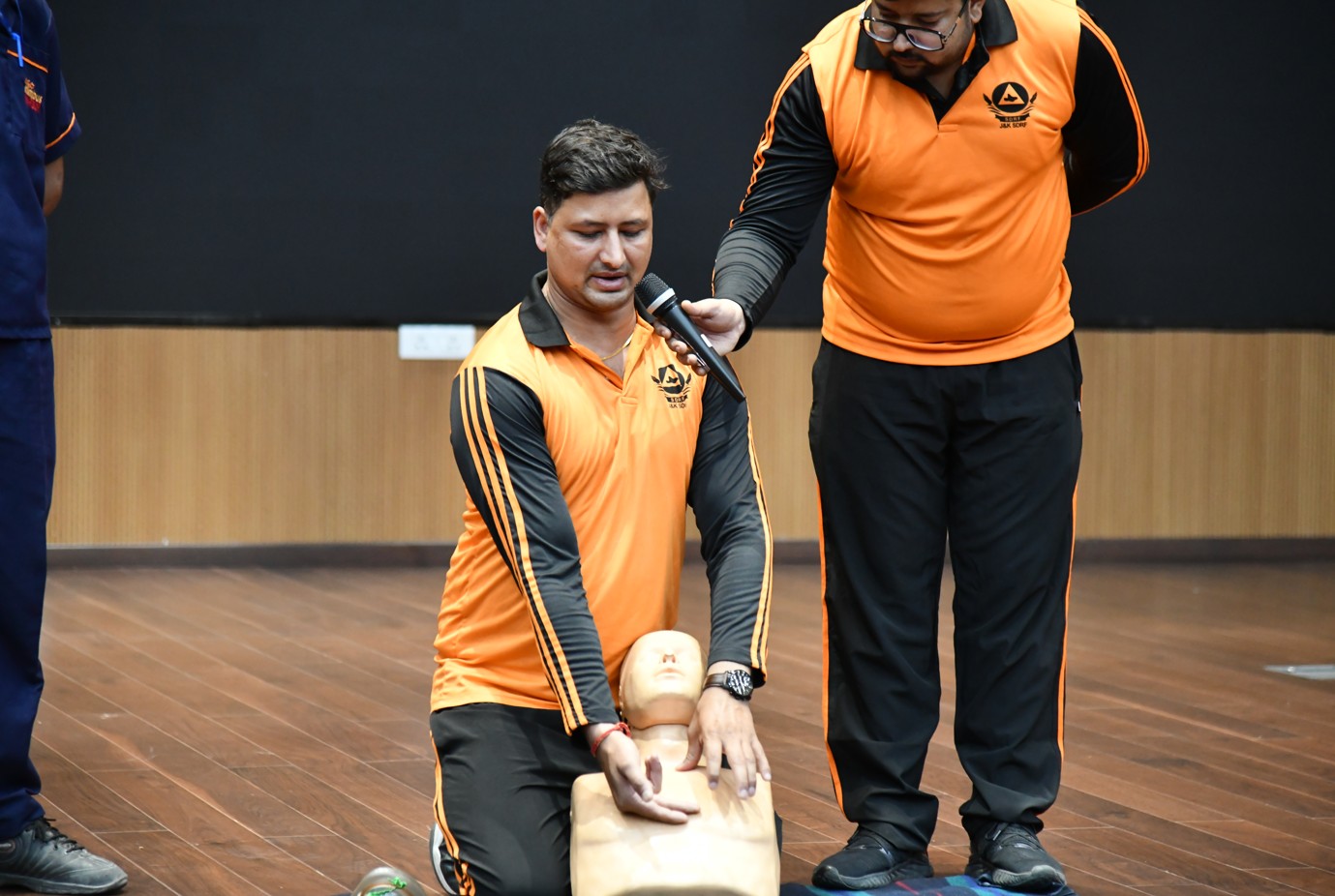 Early Times Report Early Times Report
JAMMU, May 7: In a significant effort to enhance disaster preparedness, the Indian Institute of Management (IIM) Jammu organized an important awareness session in collaboration with the State Disaster Response Force (SDRF) at its Jagti Campus. The session, aimed at sensitizing the IIM Jammu community on safety measures during emergencies, was graced by Prof. B.S. Sahay, Director of IIM Jammu.
Prof. Sahay highlighted the courage and dedication of the armed forces, particularly referencing "Operation Sindoor", which he described as a symbol of justice and a message of the nation's firm stance against terrorism. He reaffirmed IIM Jammu's commitment to national development and support for Jammu and Kashmir, emphasizing the importance of staying aligned with government advisories.
"The leadership of Hon'ble Prime Minister Shri Narendra Modi is a source of immense pride for all of us. We express our deepest gratitude to the Jammu and Kashmir Police and SDRF for their efforts in organizing this crucial session," Prof. Sahay said.
The session was conducted under the guidance of Inspector Sanjeev Kalsi from the J&K Police, alongside his dedicated SDRF team. Inspector Kalsi spoke about the importance of rapid and informed responses in the face of modern threats, detailing that 13 such awareness camps are being held across Jammu and Kashmir, with the IIM Jammu session being one of the most significant.
The session's primary focus was on preparing IIM Jammu's faculty, officers, staff, and students for emergencies, particularly air raid and air strike scenarios. Inspector Pavinder Singh from SDRF Jammu and Kashmir led a comprehensive training session, covering essential protocols for air raids, the importance of pre-hospital care, and life-saving techniques.
Through live demonstrations, participants were trained in basic life-saving skills such as CPR, fracture management, and casualty evacuation procedures. The SDRF team also provided practical guidance on actions to take during air raid alerts, emphasizing immediate shelter-seeking, avoiding crowded spaces, and following blackout protocols like switching off lights and shutting down inverters.
The session also highlighted various methods of transporting injured individuals, such as single-hand and multiple-hand seats, leg crunches, shirt drags, blanket drags, and Preliminary Stabilization and Positioning (PSP) techniques.
|
